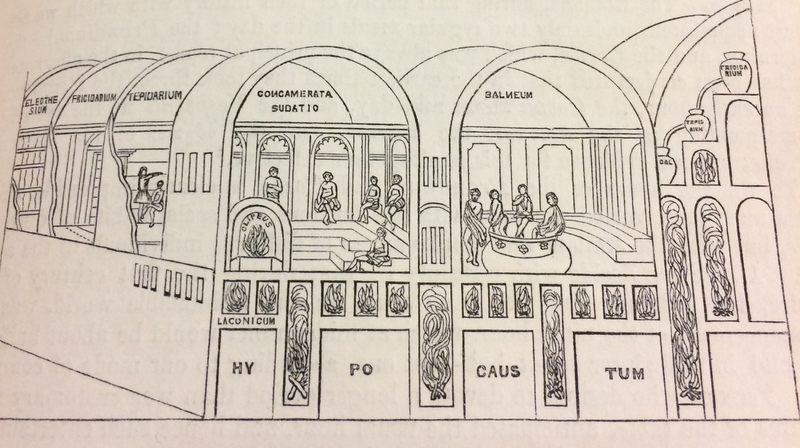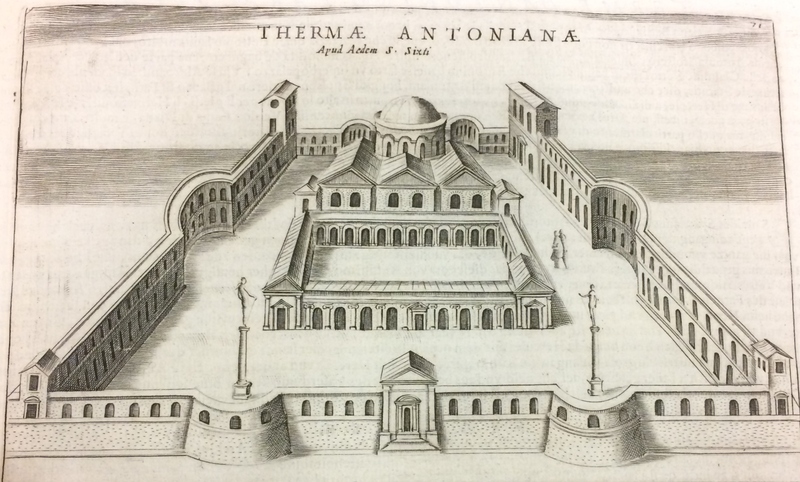Logistics
The Baths of Caracalla spread over 300 acres.1 The main bathhouse was built by Caracalla and completed around 216 CE. It took 5 years and 9,000 workers.2 The larger rectangular structure around the main building was constructed after Caracalla’s death; it contains shops, offices, libraries, etc. The baths lined the Via Appia Antica on the southeast boundary of Rome.3 They were built on a slope, leveled by cutting into a hill on the south side and rising up the north side of the complex.
The baths were supplied with water from the Aquae Antoniniana, some of which was fed directly to cisterns on top of the baths. The Aquae Antoniniana branched off of the Aquae Marciana and had a water capacity that was equivalent to 1/24ths of the total water supply of Rome.4 The water was warmed in boilers that were heated by furnaces, which were called praefurnia. Additionally, the furnaces were used to heat the floor and walls of various rooms in the baths. The floors of those rooms were elevated by small stacks of brick. These elevated floors allowed hot air and gas directly from the furnace circulate and heat the rooms from below, in a so-called hypocaust heating system. To heat the walls the Romans employed a similar technique. They built hollow areas in the walls that were connected to the hollow space under the floor of the room. This allowed the gases and air from the same furnace as the floor to heat the room from the walls, before being released from the eaves of the roof. The furnaces were usually slow burning and fueled by wood. The larger baths usually lined up their furnaces and connected them using service passages underground, which kept the baths running smoothly.
1YFikret Yegül, Bathing in the Roman world (Cambridge: Cambridge University Press, 2010) 110.
2Mithen, Steven, and Sue Mithen. "Building Rivers and Taking Baths: Rome and Constantinople, 400 BC–AD 800." In Thirst: For Water and Power in the Ancient World, (Cambridge, Massachusetts: Harvard University Press, 2012) 138.
3Fikret Yegül, Bathing in the Roman world (Cambridge: Cambridge University Press, 2010) 110.
4Fikret Yegül, Bathing in the Roman world (Cambridge: Cambridge University Press, 2010) 116.

